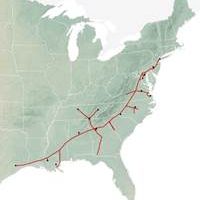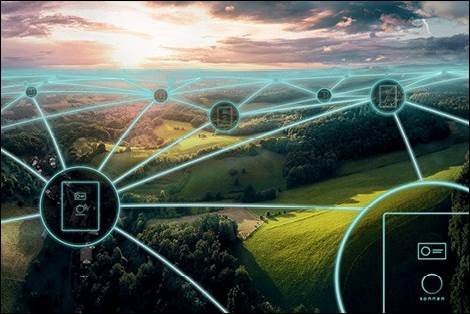The vulnerability of the nation’s fossil energy supply system was on full display again last week. Hackers penetrated the computer systems of Colonial Pipeline, causing a shutdown of the 5,500-mile network that delivers nearly half of the gasoline, diesel and jet fuel consumed on the East Coast. While New England drivers were spared the worst – paying a few pennies more per gallon during the outage – drivers in some mid-Atlantic and Southeastern states queued up for hours at gas stations, only to see them run dry. All of us have become unwilling hostages to an energy delivery system that’s completely out of step with the times.
With urban mass transit systems and airport fuel terminals also running dangerously low on fuel, a larger crisis was averted when the pipeline owners paid $5 million in ransom to a group of professional hackers called DarkSide. This Russian-based extortion outfit stole gigabytes of customer information and operating data from Colonial Pipeline and threatened to make it forever inaccessible to the firm.
Coming on the heels of a massive power blackout in Texas in February, this latest energy supply crisis once again illustrates the dilemma facing the nation’s aging fossil energy supply network: either more money has to be poured into this antiquated delivery system or we need to quickly transition to a more resilient national energy supply system that deploys electric vehicles and decentralized renewable resources.
Colonial Pipeline Piggy Bank Becomes a Sitting Duck
A brief history of Colonial Pipeline reveals both the soft underbelly and deeply entrenched attitudes of one of the nation’s largest energy traders. The largest investor in this 60 year-old pipeline is Koch Industries, an operator of some of the nation’s dirtiest fossil energy facilities and a fierce opponent of regulations on greenhouse gases.
Construction of the Colonial Pipeline network began in 1961, when highway driving and jet air travel were still in their infancy. As new environmental regulations took effect over the next two decades, half of the refinery capacity in the Northeast was shut down – increasing the importance of the Colonial Pipeline for petroleum-thirsty customers on the East Coast. Today, the Colonial Pipeline delivers more than 3 million barrels every day.
With capacity running at nearly 100 percent, the Colonial Pipeline has virtually no room for error in managing its operations. Yet its owners have treated this multi-billion dollar system more like an ATM machine than as a strategic national asset. In 2015, for instance, the owners spent $163 million on capital investments. Yet dividends paid out to investors were about $300 million a year in the four-year period from 2014 through 2017, and then rose to $670 million in 2018 and $458 million in 2019, following a generous round of federal tax cuts.

With the DarkSide ransomware attack, the Colonial Pipeline’s and other pipeline operators may have met their match. According to a recent report from IBM, the global energy industry ranked as the third-most targeted sector for cyberattacks in 2020, behind only finance and manufacturing. Many oil and gas pipelines rely on decades-old computer operating systems that are ill-equipped to defend against sophisticated cyberattacks, nor can they be easily upgraded. Electricity grid operators face a similar cyber threat.
We Were Warned About ‘Brittle Power’
While the successful Colonial Pipeline hack will surely invite more copycat attacks against American energy companies, this precarious situation should take no one by surprise. Forty years ago, the Pentagon sounded the alarm in a study of the frailties of the nation’s energy delivery system. This landmark report, Brittle Power, turned military thinking about national energy security on its head. Instead of focusing on foreign supply disruptions, Brittle Power chronicled how U.S. energy infrastructure faces a host of domestic security threats – from weather and accidents, to negligence and acts of malice.
In recent years, the dire warnings of Brittle Power have really started to hit home. In 2017, for example, Hurricane Harvey hit Texas with record rainfall, flooding many oil refineries in the state. As a result, Colonial Pipeline had to suspend shipments to its East Coast customers for nearly two weeks, causing gasoline prices to spike by 25 percent. The fierce winter storm that hit Texas this February had a similar impact, raising gasoline prices across the nation as refineries and pipelines struggled to get back on line.
The electric utility sector has also become a prime target. In 2016, for example, professional hackers associated with the Russian government knocked out large sections of the power grid in Ukraine, the first intentional blackout triggered by cyberattack. The Obama administration took notice and rang alarms about America’s vulnerability to grid-related cyberattacks.
A Better Way Forward
There is a safer and more sustainable path to the future. Our energy policies must invest in more resilient community infrastructure that can withstand more severe weather events and malicious acts perpetrated by human foes, both foreign and domestic. Such resilient energy systems would not only reduce the impact of supply disruptions but also cost less to operate, perform better under stress, and advance our nation’s long-term energy goals. Microgrids that harvest the energy of the sun, wind, water, and biofuels — rather than non-renewable fuels — dissipate the risks of power blackouts and accelerate recovery times after blackouts or other periods of stress.
Amory Lovins expanded on this premise in his 2011 book called Reinventing Fire. Here Lovins laid out a vision for “island-able” microgrids that operate even when a larger grid goes out. In addition to promoting “islands” of sustainable power, such microgrids could dissipate the risks of power blackouts over large metropolitan areas and accelerate recovery times after blackouts or other periods of stress. But for this to work over the long term, Lovins emphasized that the system would also have to deploy decentralized energy sources that are renewable – harnessing “the energy of the sun, wind, water, or farm and forestry wastes, rather than that of depletable fuels.”
At Solaflect Energy, we believe there are practical steps you can take to build a cleaner and more resilient energy future:
- To avoid the specter of gas shortages, consider buying an electric vehicle.
- To avoid losing power at home and staying secure when the grid goes down, consider adding a home battery system.
- And to realize a more climate friendly and secure energy future, consider installing a backyard Tracker (or more than one!) to power your own sustainable microgrid!
Solaflect Energy is your home energy management partner. We install clean and affordable solar electricity and home battery systems for a more resilient and climate-friendly future. Click here to contact us or call (802) 649-3700. Working together, the power is in our hands to make a difference!






